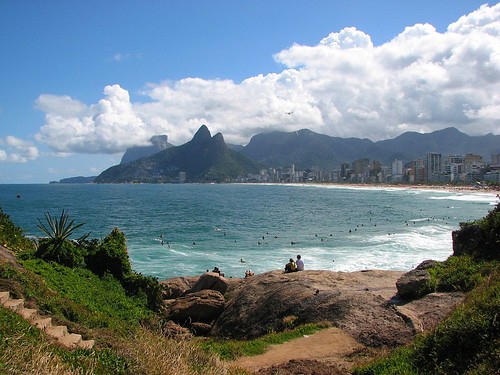 Over nine days, thousands of events were held in the lead-up to and during Rio+20, including more than 500 official and side events at the Riocentro Convention Center, where the conference was held.
Over nine days, thousands of events were held in the lead-up to and during Rio+20, including more than 500 official and side events at the Riocentro Convention Center, where the conference was held.
Rio+20 was the biggest UN conference ever held, with broad participation of leaders from Government, business and civil society, as well as UN officials, academics, journalists and the general public. Read on for some key figures from Rio+20.
Commitments
More than $513 billion mobilized in commitments for sustainable development, including in the areas of energy, transport, green economy, disaster reduction, desertification, water, forests and agriculture.
692 voluntary commitments for sustainable development registered by governments, business, civil society groups, universities and others.
Participants at Riocentro (as of close of 21 June)
Total number of participants: 45,381
Delegations participated from 188 countries and three observers
Over 100 Heads of State and Government
Delegates: approximately 12,000
NGOs and Major Groups: 9,856
Media: 4,075
Dialogue Day passes for civil society: 1,781
Security Personnel: 4,363
About 5,000 people worked at Riocentro daily
Riocentro Event Space
Total area of Riocentro: 571,000 m², of which 100,000 m² was constructed for Rio+20
205 km fiber optic cable network
Wireless Internet access for up to 32,000 concurrent users
8 km of telephone cables
More than 5,000 ICT assets (computers, network equipment
Network capacity equivalent to a city of 120,000 inhabitants
Shared infrastructure of 600 workstations
17 restaurants in the food court
36 X-ray portals
Transportation to Riocentro
About 350 buses transported accredited participants
Seven bus lines connected from Center, South Zone and Barra da Tijuca in Rio de Janeiro to Riocentro
Two lines connected from Rio de Janeiro's two airports to area hotels
Athlete's Park
Across from Riocentro, an exhibition area, open to the general public, was created at Athlete's Park to showcase sustainable development practices, featuring exhibits by 57 countries (total area of 7,000 m²) and 33 international organizations and specialized agencies (total area of 1,305 m²).
Photo courtesy of Cyro A.Silva via Flickr (CC BY 2.0)
 Over nine days, thousands of events were held in the lead-up to and during Rio+20, including more than 500 official and side events at the Riocentro Convention Center, where the conference was held.
Over nine days, thousands of events were held in the lead-up to and during Rio+20, including more than 500 official and side events at the Riocentro Convention Center, where the conference was held.
